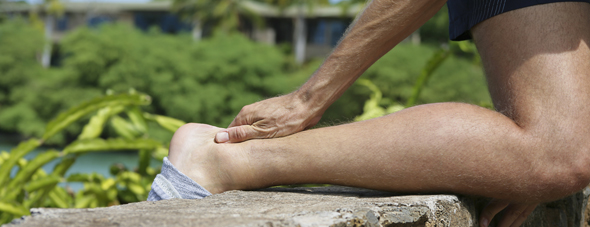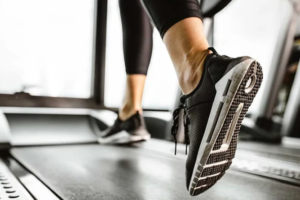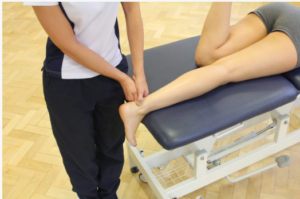Achilles Tendonitis in Athletes: Decoding Triggers, Proactive Prevention
February 6 2024
Dive into the world of athletes and Achilles Tendonitis! Dr. Bartholomew discusses the causes, prevention strategies, and effective treatments in our latest article. #SportsInjuries #AthleteHealth #FFLC

Athletes, whether professional or recreational, often push their bodies to the limit in pursuit of peak performance.
Unfortunately, this dedication can sometimes lead to overuse injuries, and one of the most common among athletes is Achilles tendonitis. The Achilles tendon, the largest tendon in the body, connects the calf muscles to the heel bone and is crucial for various athletic movements such as running, jumping, and pivoting. In this article, its causes, prevention strategies, and effective treatment options.
Achilles tendonitis is the inflammation of the Achilles tendon, typically caused by repetitive stress or overuse. Athletes engaging in activities that involve repetitive motion, sudden increases in training intensity, or inadequate warm-up and stretching are particularly susceptible to this condition. Runners, basketball players, soccer players, and other athletes who frequently engage in explosive movements are at a higher risk.
In delving into the intricacies of Achilles tendonitis among athletes, understanding the root causes becomes paramount. The development of this common overuse injury is often attributed to a complex interplay of factors, ranging from repetitive stress and inadequate footwear to muscular tightness and insufficient flexibility. These are the top causes for Achilles tendonitis:
Overuse and Repetitive Stress:
Athletes who engage in repetitive activities, such as running, can places excessive strain on the Achilles tendon. Over time, this can lead to micro-tears in the tendon, causing inflammation and pain.

Inadequate Footwear:
Wearing improper footwear with insufficient support or cushioning can contribute to Achilles tendonitis. Athletes should invest in well-fitted, supportive shoes tailored to their specific sport or activity.
Tight calf muscles and limited ankle flexibility can increase the strain on the Achilles tendon during movement. Regular stretching and flexibility exercises can help mitigate this risk.
As the saying goes, prevention is often the best medicine, and mitigating the risk of Achilles tendonitis requires a proactive approach. Athletes can safeguard their Achilles tendons by adopting targeted prevention strategies, including proper warm-up routines, gradual training progression, careful footwear selection, and strength training exercises tailored to enhance stability and reduce strain. Here are ways you can do to minimize the occurrence of Achilles tendonitis:
Proper Warm-up and Stretching:
Athletes should incorporate dynamic warm-up exercises and targeted stretches for the calf muscles and Achilles tendon before engaging in intense physical activity.
Gradual Progression:
Avoid sudden increases in training intensity or duration. Gradually progress to more intense workouts to give Achilles tendon time to adapt.
Appropriate Footwear:
Choose footwear designed for the specific demands of the sport. Replace shoes regularly to ensure proper support and cushioning.

Strength Training:
Incorporate strength training exercises focusing on the calf muscles and lower leg to improve overall stability and reduce strain on the Achilles tendon.
Navigating the path to recovery from Achilles tendonits involves a comprehensive understanding of effective treatment options. Whether through restorative measures, physical therapy interventions, orthotic support, or medication, addressing this common affliction among athletes demands a tailored and multifaceted approach to ensure optiomal healing and a swift return to peak performance.
Treatment options include:
Rest and Ice:
Initial treatment often involves rest, ice, compression, and elevation (R.I.C.E.). This helps reduce inflammation and provides the tendon with an opportunity to heal.

Physical Therapy:
A podiatrist or physical therapist can recommend specific exercises to strengthen the Achilles tendon and surrounding muscles, improving overall biomechanics.
Orthotics:
Custom orthotic inserts may be prescribed to provide additional support and correct any biochemical issues contributing to the injury.
Medication:
Non-steroidal anti-inflammatory drugs (NSAIDs) may be recommended to alleviate pain and reduce inflammation.
 Achilles tendonitis is a common ailment among athletes, but with proper understanding, prevention strategies, and timely treatment, its impact can be minimized. Athletes should prioritize a holistic approach to their well-being, including appropriate training techniques, footwear choices, and regular check-ups with healthcare professionals to address potential issues before they escalate. By taking proactive measures, athletes can continue to pursue their passion with reduced risk of Achilles tendonitis and other overuse injuries.
Achilles tendonitis is a common ailment among athletes, but with proper understanding, prevention strategies, and timely treatment, its impact can be minimized. Athletes should prioritize a holistic approach to their well-being, including appropriate training techniques, footwear choices, and regular check-ups with healthcare professionals to address potential issues before they escalate. By taking proactive measures, athletes can continue to pursue their passion with reduced risk of Achilles tendonitis and other overuse injuries.
If you are experiencing pain in the arch of your foot, don’t delay. Contact Dr. Bartholomew’s office at (239) 430-3668 (FOOT) or visit www.NaplesPodiatrist.com to schedule an examination.
—————————-



 Fax: (239) 692-9436
Fax: (239) 692-9436 Tel: 239-430-3668
Tel: 239-430-3668